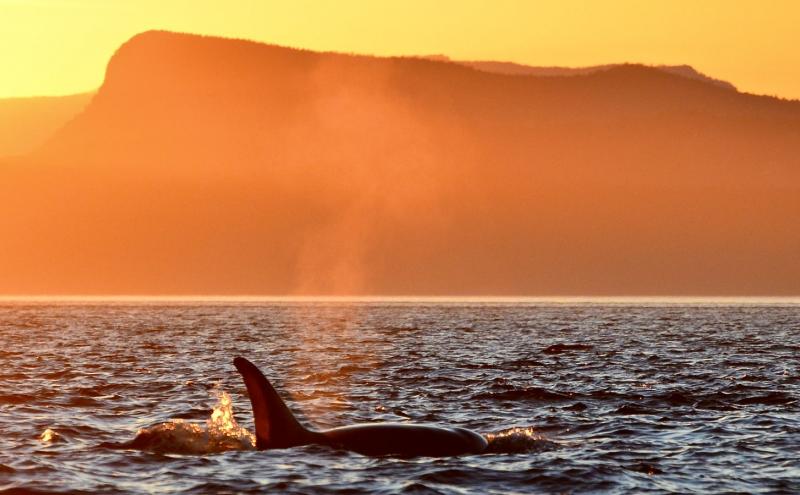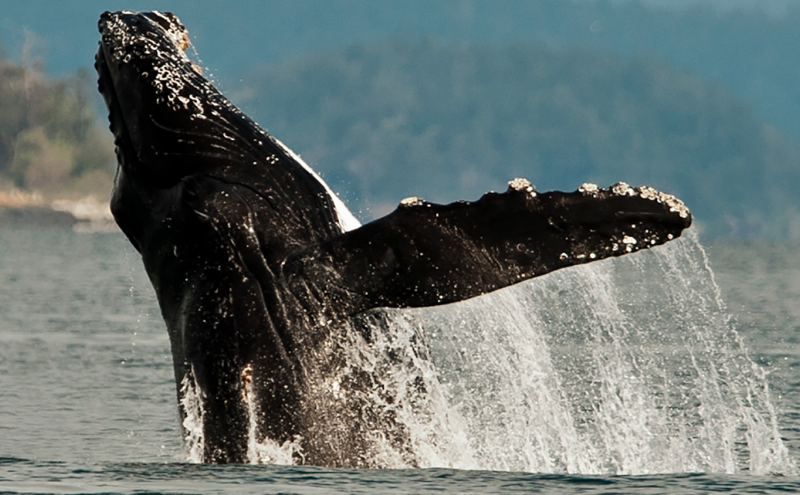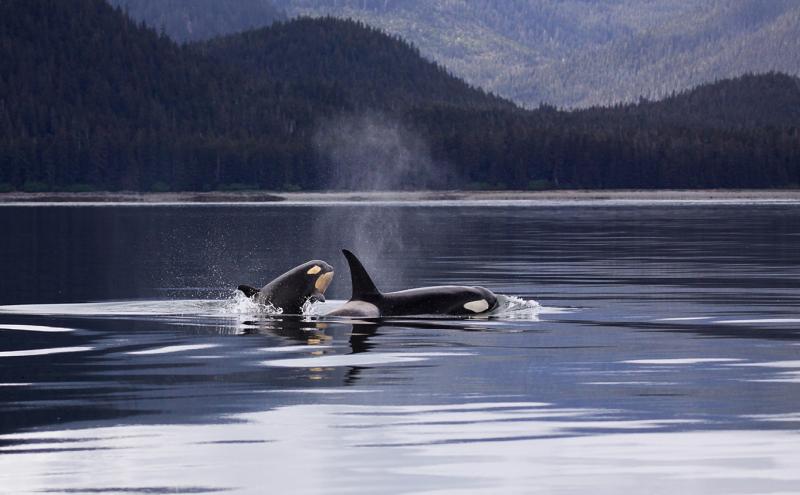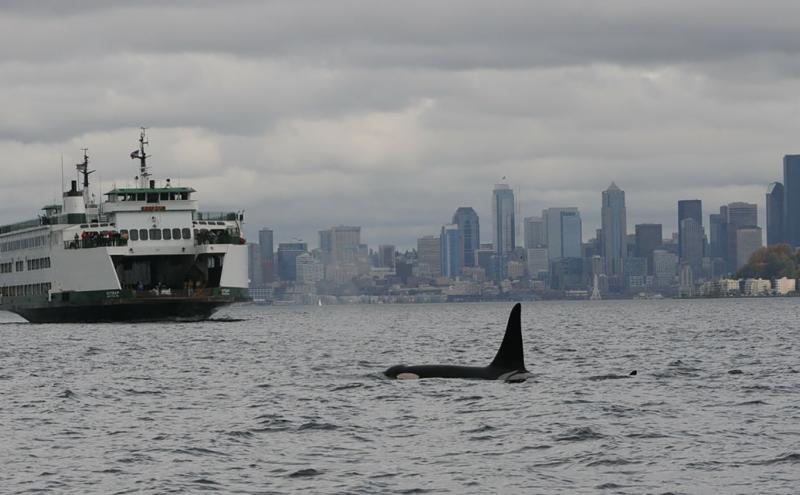
The beloved Southern Resident Killer Whale is one of the most iconic species in the Pacific Northwest. Orcas are an important part of our culture, our ecosystem, and our economy. But with just over 70 orcas left, they need our help more than ever.
In response to the increasing need to help our orcas, Washington conservation districts created Orca Recovery Day on October 16, an intentional day of action to restore habitat, reduce storm water pollution, and educate the public about things they can do everyday to help orcas. In alignment with our orca recovery priorities, the Port of Seattle helped sponsor Orca Recovery Day.
Starting in 2020, a group of stakeholders with diverse backgrounds joined together to form the Quiet Sound Program and address underwater noise, a major threat to the Southern Resident orca’s survival.
Now Rachel Aronson will lead these efforts as the new Quiet Sound Program Director, bringing maritime voices together to form a shared vision and collective actions to save the Southern Resident Killer Whales. Her background in environmental conflict resolution and group facilitation is the perfect fit to guide the organization toward calm (and quiet) seas.
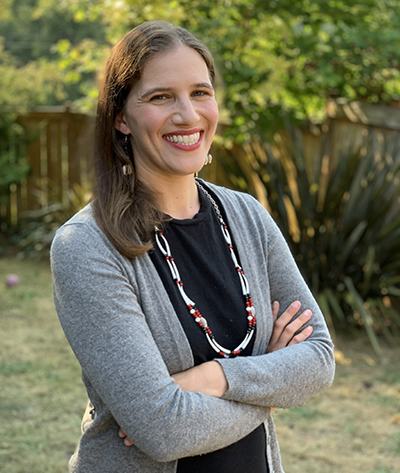
Quiet Sound is a collaborative initiative supported by Washington Maritime Blue with the mission of understanding and reducing the cumulative effects of acoustic and physical disturbance from large commercial vessels on Southern Resident Orcas throughout their range in Washington State. The idea was formed in 2019 in response to Governor Inslee’s Orca Task Force recommendations and the current Planning Team includes the Port of Seattle, the Port of Tacoma, the Northwest Seaport Alliance (NWSA), and other agencies, tribes, and organizations.
“I’m excited about Quiet Sound as a collaborative space where people with different experiences and expertise can come together and answer the question of how to support killer whales,” Aronson said.
One early goal has been the centralized reporting of whale sightings so pilots of large vessels can slow down or move away from orcas in their vicinity.
A fresh perspective
Aronson has the expertise and experience to quiet the Sound for orcas by bringing human stakeholders together for collective action.
“I have spent a lot of my career acting as a neutral party in an environmental decision-making space, and Quiet Sound is a neutral space,” Aronson said. “I want to help people to come together and make good decisions. When you put the work into building consensus, it pays off in the long run in terms of sustainable decisions.”
Her newcomer status in the maritime world allows her to come in without preconceived notions.
“Many folks in the space have been doing things a certain way for a long time,” she said. “Hopefully we can incorporate a lot of new information we haven’t tried before or new technology to locate whales and discover new ways to share information.”
Aronson currently works out of Maritime Blue’s hub at Fishermen’s Terminal, supported by a graduate fellow. An operations manager will join the crew later this fall.
The first orders of business for Aronson are writing Quiet Sound’s charter, confirming a leadership committee, and organizing working groups to start in January.
Collaborating for quiet
“Quiet Sound is exciting because everyone is already at the table,” said Aronson. “Industry representatives are already on board and committed to doing all we can to protect orcas. It’s a voluntary program folks on the water can learn from and support.”
For the first six weeks in her role, Aronson has focused on bringing together members of the planning team from these organizations:
- the Port of Seattle
- the Port of Tacoma
- the Northwest Seaport Alliance
- the Puget Sound Partnership
- the Pacific Merchant Shipping Association
- the Marine Exchange of Puget Sound
- the Washington State Ferries
- the United States Coast Guard
- Maritime Blue
- the National Oceanic and Atmospheric Administration (NOAA) and
- the Makah Tribe
Noise reduction tactics
The program's goal is to protect orcas and contribute to their recovery by reducing their exposure to vessels in Puget Sound. Less noise and fewer distractions could reduce their stress levels and help them find food. To accomplish this, the organization relies on these tactics:
- An effective alert system that can locate orcas. Engaging non-profit organizations, professional mariners, and others to be the eyes (and ears) throughout the Salish Sea
- A communication link between the spotters and the maritime industry
- Engaged, committed, and voluntary participation from large commercial vessel operators
- Tracking innovations that can be used to retrofit existing vessels and design new quieter vessels
- Monitoring and reporting on outcomes to ensure the program is achieving its goals
Whale report network
Ocean Wise, a Canadian nonprofit, has already launched the Whale Report Alert System (WRAS), a cell phone-based application that informs commercial mariners when whales are nearby, with support from the Quiet Sound planning team..
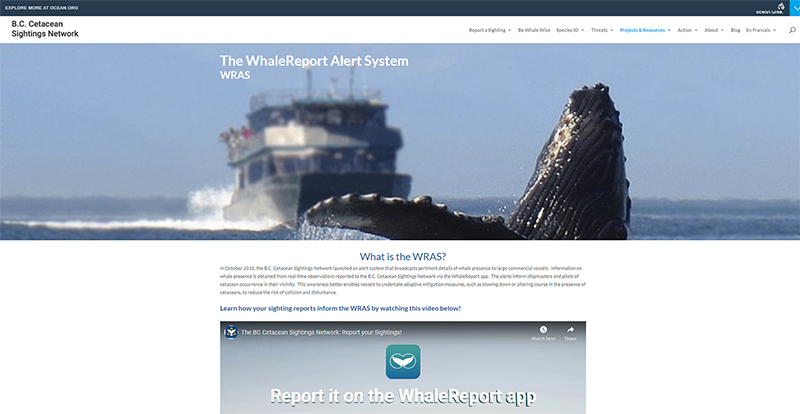
Members of the public can log whale sighting reports in the WhaleReport app (Apple, Android). And these reports are quickly shared with Puget Sound Pilots, ferry, and tugboat captains so they can change their course or speed to protect orcas.
The success of the tool (WRAS) relies on input and sightings data from multiple sources, such as citizen sightings networks in Washington State, and the Quiet Sound team is working with these networks to determine the most effective way to translate the sightings data into alerts for mariners.
Next steps
Aronson has big plans for the future. Based upon the success of the ECHO program by the Port of Vancouver BC, Quiet Sound aims to designate a trial slowdown area in Puget Sound, where ships will lessen their speed during whale season.
Aronson's goal is to secure more program funding, building on the $250,000 annual allocation from the Washington State Legislature, $100,000 from Ports, $100,000 from EPA, and $25,000 from NOAA. One innovative tactic is an upcoming partnership with the United States Navy Northwest Tech Bridge to develop technology solutions that allow manned and autonomous vehicles to sense whales in the vicinity.
With this challenge, the Navy is trying to unlock the potential of the startup private sector. Maritime Blue is a great bridge to those types of folks in marine space,” said Aronson.
Next year, depending on the COVID-19 recovery, Aronson hopes to host a Quiet Sound Summit, convening representatives from maritime research, industry groups, government organizations, and orca nonprofits to discuss how to protect whales in Washington from the threats of noise and ship strikes.
“That’s the dream,” she said. “We have great ideas for how to do this work; I’m excited to bring this under one umbrella.”
*Photo copyright: NOAA Northwest Fisheries Science Center


